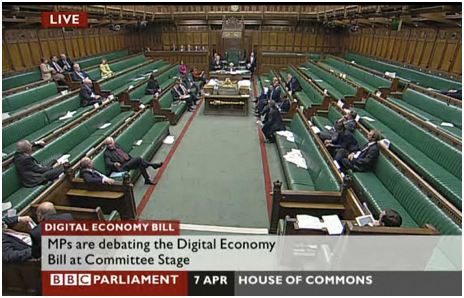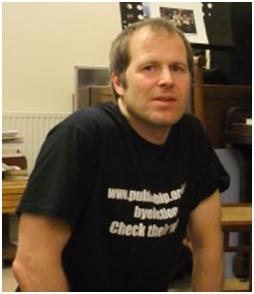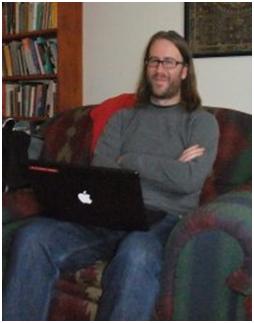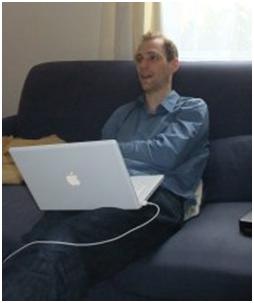Dictated to Arcturus
In a few hours this country will have voted for a new government. At least it thinks it will be a new government but in fact the government of the country is unrelated to the former democratic process. A good example of this is the passing of the digital economy bill about a month ago. (if I had been blogging then I would undoubtedly have blogged about it. ) http://www.guardian.co.uk/technology/2010/apr/08/digital-economy-bill-passes-third-reading

I reproduce this photograph without permission as a matter of public interest. This shows the process of government a few isolated members of parliament who have been persuaded to stay on to make the process legal. This process has resulted in a loss of freedom for every person in this country. It means that big business protected those who believe that they can own content can controlled the way that normal people access information. These freedoms are also being eroded elsewhere and as on the continent of Europe and the French HADOPI (three strikes and you’re out).
So the process we’re going through today has really no effect on the government of the country. It produces a random number of members of parliament on whom we rely for their personal commitment to the democratic process. We do not control the policies of the parties and the parties now believe that they have free run to elect a quasi president who makes decisions as he (there are no females in sight) feels it. There are no checks and balances. A quasi president can take the country to war against public opinion with no dissent from the people we have elected. The laws on protest are gradually being eroded. It is now illegal to make your voice heard near the House of Commons.
So what can we do. We have to work with whichever candidate happens to be elected. Most of them have some sort of morality that aligns them to the public and individual good. And we have better access to them through the tools that MySociety and others have developed. An MP cannot hide easily in the electronic era. But we cannot rely on party politics to control was process. Where in the last manifesto of the labour government did it promised to destroy our digital rights? Nobody voted for that.
So it would not surprise me if at some stage the people of this country decided to follow a dictator or simply to take to the streets. It’s not in our recent tradition but when government continues to ignore democracy than people have limits which can be overstepped. Digital democracy is one of the few nonviolent tools that we have left. Are we voting for it today? And which of the Cambridge candidates has the strongest voice?
The people of Hartlepool voted in a monkey as Mayor. http://news.bbc.co.uk/1/hi/uk_politics/1965569.stm on a platform of free bananas for schoolchildren. Did the country fall apart?
But if we do not preserve digital democracy it will.





















